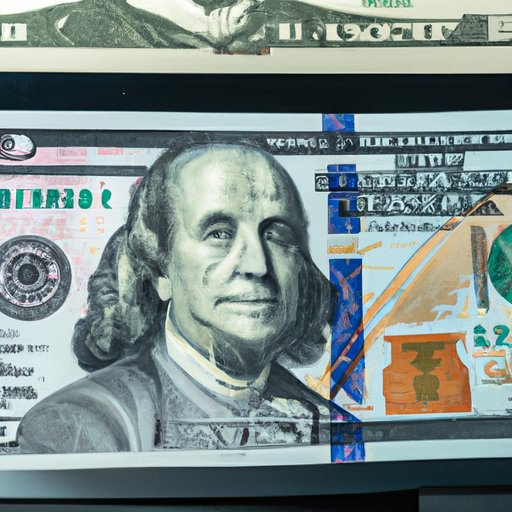
Introduction
Have you ever been handed a $100 bill and wondered if it’s real? Counterfeit money is a major problem not only for businesses but also for individuals. It’s essential to know how to spot a fake $100 bill and avoid getting yourself in trouble. This article provides a comprehensive guide on how to recognize real and counterfeit bills, common scenarios where you might encounter fake bills, and what to do if you accept a counterfeit bill.
Recognizing Genuine 100 Dollar Bills
Genuine $100 bills have specific security features designed to make them harder to counterfeit. The two most recognizable features are the watermark and security thread. A watermark is a faint image of Benjamin Franklin on the right side of the bill when held up to the light. It’s also helpful to look for color-shifting ink, which is located to the right of Franklin’s head.
The security thread is a thin, vertical strip that glows pink when viewed under ultraviolet (UV) light. Move the bill back and forth, and you will see it shift from one color to another. The thread is positioned to the right of the portrait.
Identifying Common Counterfeit Bill Indicators
There are different types of paper bills in circulation, and they can be identified by their serial number and plate number. Fake bills often have skewed designs, incorrect colors, or missing security features. You can use a magnifying glass to inspect the details on the bill’s surface, such as the distinctive lettering, lines, and portraits. Remember to compare it with a genuine bill if possible, as some fakes may look quite convincing.
Scenarios Where Counterfeit Bills Might Be Encountered
Some common scenarios where people might unknowingly come into contact with counterfeit bills include during transactions at yard sales, online trading platforms, and flea markets. Since counterfeit bills are a serious offense, be wary of deals that seem too good to be true, and use common sense when dealing with unknown sellers. Always try to trade through verified merchants and vendors, which will provide a level of security that might prevent fraudulent transactions.
Tips and Tricks for Spotting a Fake Bill
Here are some helpful tips and tricks for identifying fake $100 bills in everyday transactions:
- Feel the texture of the paper as real money has a unique feel to it as a result of the cotton and linen fibers in the bill.
- Examine the portraits for any inconsistencies or irregularities, as fake bills will often have blurred or smudged faces.
- Check for discrepancies in the text. Look for consistent spacing in the lettering and the correct placement of serial numbers.
- Use a UV light to verify security features such as the security thread and color shift. While most counterfeiters can replicate the design of a $100 bill, they cannot reproduce these specialized features.
What to Do if You Accept a Counterfeit Bill
If you unknowingly accept a counterfeit $100 bill, it’s crucial to stay calm and contact local law enforcement or the Secret Service. They can investigate the source of the bill and determine what actions should be taken. As long as you did not produce or knowingly defraud someone using a fake $100 bill, you won’t be held liable. This is a common mistake, but it can easily be rectified by cooperating with the authorities.
Conclusion
In conclusion, it’s essential to learn how to identify genuine and counterfeit $100 bills. While some fake bills may look legitimate, there are specific details that can help you spot them with a trained eye. Knowing where and how to use these bills and what to do if you receive a fake note is equally important. These tips will help protect yourself from fraud and ensure you’re not unknowingly breaking the law.





